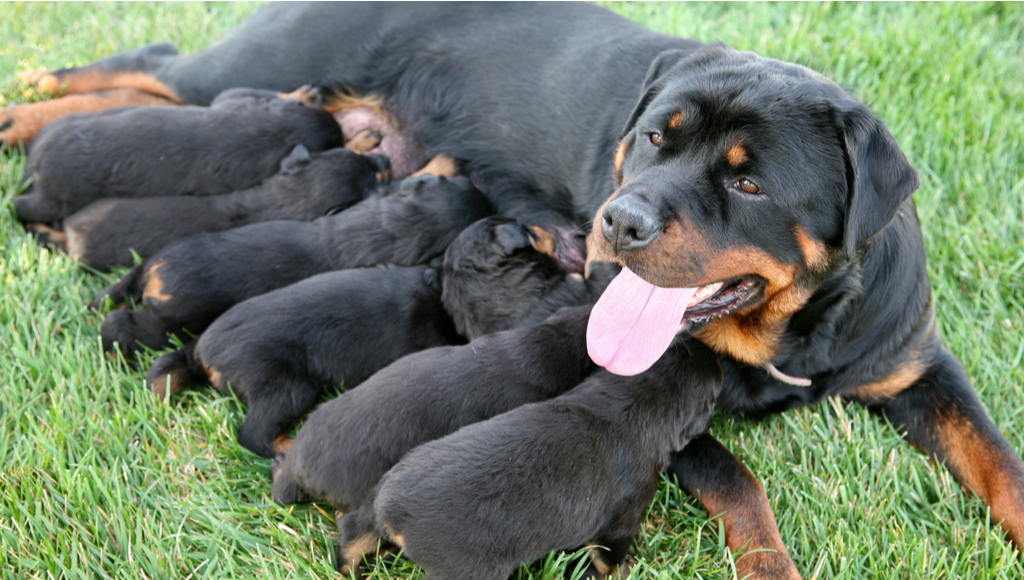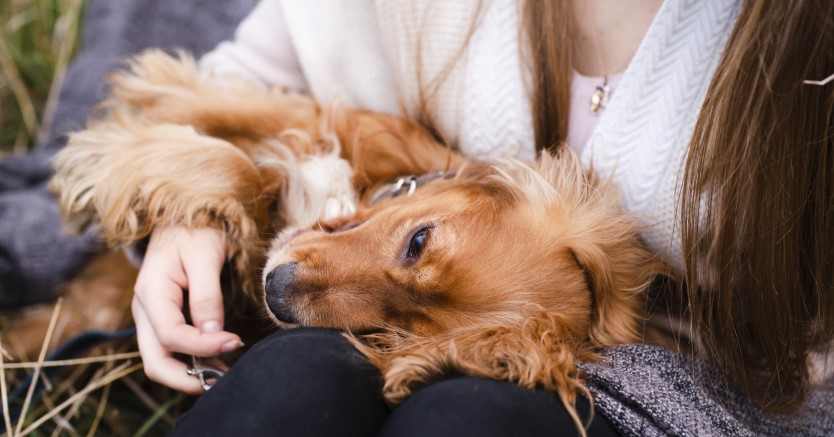What to Expect If Your Pet is Expecting!
Learn what you can expect from your pet cat or dog during pregnancy and delivery.

Finding out that your furry friend is expecting can be very exciting. In just a few short months, your cat or dog will go from being a typical pet to having a litter of adorable little ones that she will have to love and care for. As pet pregnancies are quite different from human gestation, it is important to know what you can expect.
If you suspect that your pet is pregnant but the pregnancy has not yet been confirmed, you will first want to see a veterinarian. Expecting pets can experience a wide range of health conditions during pregnancy so you’ll want to have her continuously monitored by a professional to reduce these risks.
Your vet will use various methods to determine whether or not the animal is truly pregnant and how far along she is by performing a simple blood test. According to Hills Pet Nutrition, a vet can test for the hormone relaxin after 21 to 25 days post-conception for dogs or after 15 days for cats. If the level of this hormone is found to be raised, pregnancy can usually be confirmed.
Pregnancy Symptoms in Pets
Pets often start exhibiting signs of pregnancy soon after conception. Your pet may experience mild vomiting early in pregnancy, similar to humans. She may also experience a loss of appetite and become less active. Some vaginal discharge is also common about one month after mating.
As the cat or dog pregnancy progresses, the animal may show other signs of pregnancy. This may include enlarged mammary glands, darkened nipples, and a swollen-looking belly. However, not all pets will have a noticeable “baby bump” early on in pregnancy. Some unsuspecting pet owners may even mistake an enlarging belly as weight gain.
Gestation Periods in Pets
Gestation periods can differ depending on the type of pet you own. The gestation period begins when the female animal becomes pregnant and lasts until she delivers. For dogs, this gestation period is approximately nine weeks, or about 63 days. However, it is not uncommon for pregnancies in dogs to last anywhere from 58 to 68 days on average.
The gestation period in cats is also relatively short, lasting just eight to nine weeks or roughly 60 days. Changes in your cat in the first one to four weeks will be subtle. Most of the physical changes will occur in the final four to eight weeks. It is important to prepare a place for your pet to have her babies several weeks beforehand.
Preparing for Labor & Delivery
When dogs and cats near the end of their pregnancy, they will usually try to find a safe place to give birth. Pets owners can provide their pet with a whelping box several weeks before giving birth to help the animal get used to it. Also known as a nesting box, a whelping box is designed to protect the puppies or kittens after birth by keeping them safely contained and protected from the danger of smothering or crushing.
It can also be beneficial to have other items on hand in case you need to participate in the delivery. A standard whelping kit should include a digital thermometer, disposable exam gloves, absorbent disposable pads, aspiration bulb, antiseptic, surgical scissors with blunt tips, rubbing alcohol, and plenty of clean hand towels and washcloths.
During the final week of the dog or cat pregnancy, the mom-to-be may be restless as she prepares for birth. She may seclude herself in a quiet area and you may find her scrabbling in her bedding in the final 24 to 48 hours.
Occasionally, a pet will attempt to move the whelping box that you have created for her if she feels like the box is in an unsafe location. If she does succeed, try not to move the box from her preferred location unless necessary for her or the babies safety. Once labor begins, it will usually last an average of three to 12 hours. During this time, the pregnant pet will usually experience three stages.
Stage 1:
- Small contractions of the cervix and uterus
- Swelling of the vulva
- Panting, shivering, or restless behavior
Stage 2:
- Stronger contractions followed by a clear fluid emitted from the vulva
- Birth of the first puppy usually within 20 to 30 minutes of the fluid
- Biting of the sacs and umbilical cords followed by a cleaning from mom
Stage 3:
- Passing of the placentas after each puppy is born
- More panting and restlessness from mom
- Arrival of additional puppies every 20 minutes to an hour
Complications that Can Arise
In some circumstances, complications may arise during your pet’s birth that could indicate that some intervention is necessary. Just like with a human pregnancy, a pet pregnancy can be highly unpredictable. Most dogs and cats are able to have their litter without any interference from their owners. However, certain red flags may indicate that there is a problem.
If the mother strains to deliver a puppy or kitten but it does not appear within two hours, contact your vet. Also, be on the lookout for a brownish discharge from the vulva that is not accompanied by a puppy or kitten and at least two hours has passed. This could indicate a separation of the placenta from the fetus which is considered a veterinary emergency.
If your pet is having difficulty during the birth, pet owners may be able to safely lend a helping hand. If mom is unable to remove the puppy or kitten from the amniotic sac, gently tear the membrane to free the newborn. It may also be necessary to sever the umbilical cord if mom doesn’t do it herself. Also check the newborns for breathing and movement.
Caring for Your Pet After Delivery
As you can probably guess, your pet will be very tired after delivery and will need time to rest and care for her babies. Give the new mom some space to clean and care for her new litter. Keep an eye on mom and babies in the upcoming days and weeks and contact your vet if you develop any concerns.
Ready to start saving money on pet wellness care?
Then take a look at Mint Wellness, the pet wellness plan that provides fast reimbursement on routine pet care. Save on vaccinations, wellness exams, preventatives, dental, and more!
Learn More


